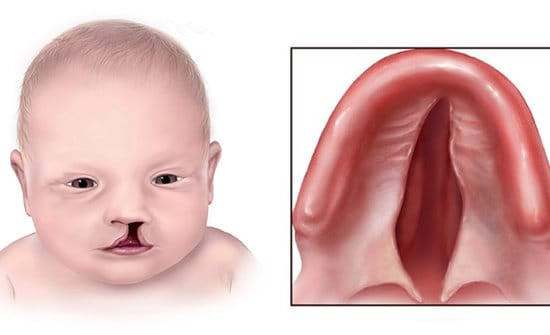Some of the pathologies found in newborns related to the maxillofacial area were usually congenital cleft lip and palate, diseases commonly called "rabbit lip" and "worm mouth".
They are formed as a result of disorders in the embryo in the first days of pregnancy, and the child is born with this disease.
APA reports that Ismayil Farzaliyev, an expert of the Ministry of Health, said this.
According to him, the reason is various: hereditary diseases, problematic pregnancy period (taking various drugs, intoxication, intrauterine hypoxia, stress and systemic diseases such as some diabetes), environmental pollution, bad habits of the mother and finally consanguineous marriage:
"The most common problems in children born with cleft lip and palate are malnutrition, airway obstruction, wheezing, speech disorder, weight loss, etc.
such problems are encountered.
For this, you should consult a specialist in time and start treatment.
Children born with these pathologies should be under the constant supervision of maxillofacial surgeons, orthodontists, speech therapists and pediatricians until the age of 17-18, and should receive their examination and treatment.
For cleft lips, "cheiloplasty" in children is recommended in the first 3-6 months, and for cleft palate, "staphyloplasty" and "uranostaphyloplasty" are recommended in 9-18 months.
Surgical operations are performed under general anesthesia.
Let me also mention that premature operation on the palate leads to disruption of the development of the upper jaw, and later to disruptions in speech.
Talking about the lack of development of the bones of the facial skeleton, the doctor noted that it causes various deformations on the face, that it was a violation of the teeth that leads to a violation of food intake, an excessively forward or backward jaw that leads to a curvature of the face, and other functional and aesthetic violations:
"For this reason, various psychological complexes (social isolation from society, self-isolation, reduced work activities, etc.) may arise in those persons.
These operations are generally called "orthognathic surgery" in maxillofacial surgery and should be the joint responsibility of the surgeon and orthodontist.
At this time, the patient is consulted by the orthodontist and the surgeon, and it is decided whether or not surgical treatment is necessary as part of the treatment.
The operation is usually performed at the age of 17, when the development of the bones of the facial skeleton is complete.
Planning the surgery is a very important issue.
Successful results of these operations cannot be expected without the application of modern digital technologies.
The operation is performed under general anesthesia.
The extent of the surgical operation depends on the severity of the deformity.
There is almost no pain after the operation."
